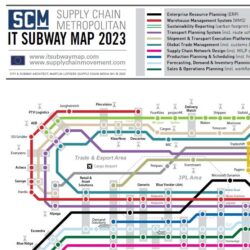Understanding costs comes first

When we think of visibility, we tend to think of sophisticated systems that provide insight into the functioning of the entire supply chain. Such systems offer all kinds of advantages but, in my opinion, they are not the first step towards more visibility.
When I think of visibility, the first thing I think of is a good understanding of the supply chain budget and actual costs. At several companies where I’ve worked, this proved to be a considerable problem. The budget was often lacking in details, set up according to cost types, and insufficiently substantiated. The Finance Department usually turned out to be the driving force behind the chosen budget setup. But admittedly, they had limited time to look at alternatives. Or they simply said ‘This is how we’ve been doing it for years’.
Therefore, the monthly discussion of the financial results was not much fun, especially when there were shortfalls (which occurred more frequently than positive deviations – does that sound familiar?). How often can you say, by way of explanation, that the product mix is different than assumed in the budget? To be fair, positive deviations were not always easy to explain either, but they usually turned out to be less of an issue.
To improve this, I introduced a standard activity-based supply chain budget at a number of companies. It named some main activities, plus appropriate volumes and cost parameters for each activity. Volumes were based on the last 12 months and adjusted as necessary for expected changes, such as sales growth. A similar approach was followed for cost parameters, including the expected impact of inflation. Clear assumptions, therefore, on which the budget was based.
Lots of grumbling
This sounds like a simple approach but, as you can imagine, few colleagues within Supply Chain and Finance initially welcomed this change – and that’s putting it mildly. Numerous reasons were given as to why this approach could not work at ‘our unique company’. One company had logistics operations in around 25 EMEA countries, so a robust change management effort was essential. There was lots of grumbling in the first year, but less so in the second, and by the third year it had become business as usual.
The benefits of this approach gradually became clearer. Costs were found that shouldn’t have been allocated to Supply Chain (so no savings, but a budget reduction). The ‘other costs’ category, which was included initially for costs outside the main activities, became smaller and smaller. Monthly reports quickly showed whether deviations were caused by volume deviations or cost deviations. More importantly, countries started comparing costs among themselves, asking why certain costs were lower in one country than elsewhere. This led to the creation and follow-up of continuous improvement plans per country. The standard budget format became the first step towards further standardization in the supply chain such as for KPIs and systems.
First step towards visibility
In my view, obtaining better supply chain visibility requires a number of steps. You cannot get into the Champions League overnight, unless you are a new company without a long history. In other words, after learning to crawl, you first have to learn to walk and then learn to run before you can enter races, let alone win them. A well-structured activity-based supply chain budget is such a first step towards visibility, and an excellent basis for subsequent improvements.
Lex Kop, supply chain consultant, sparring partner and project manager









